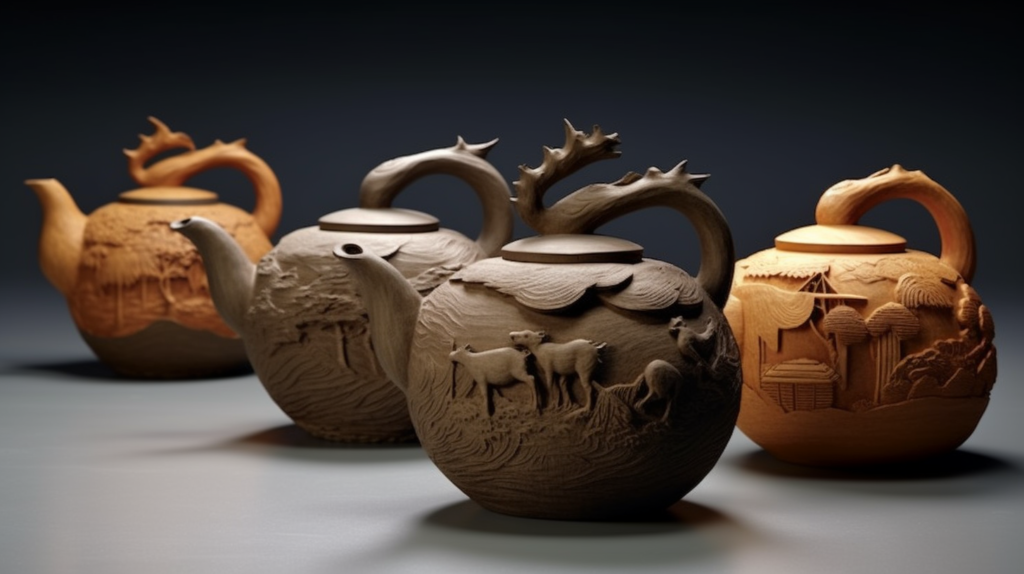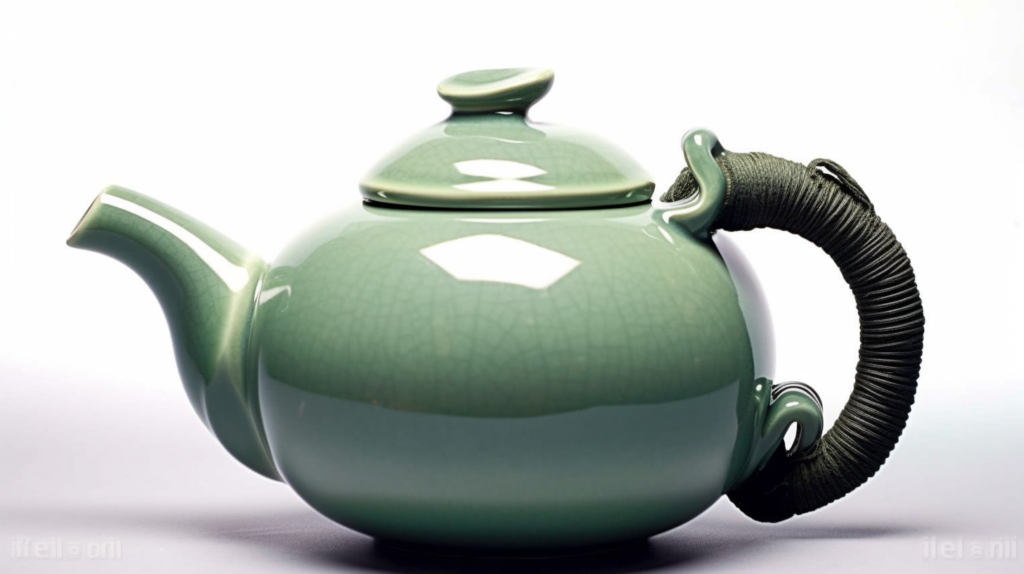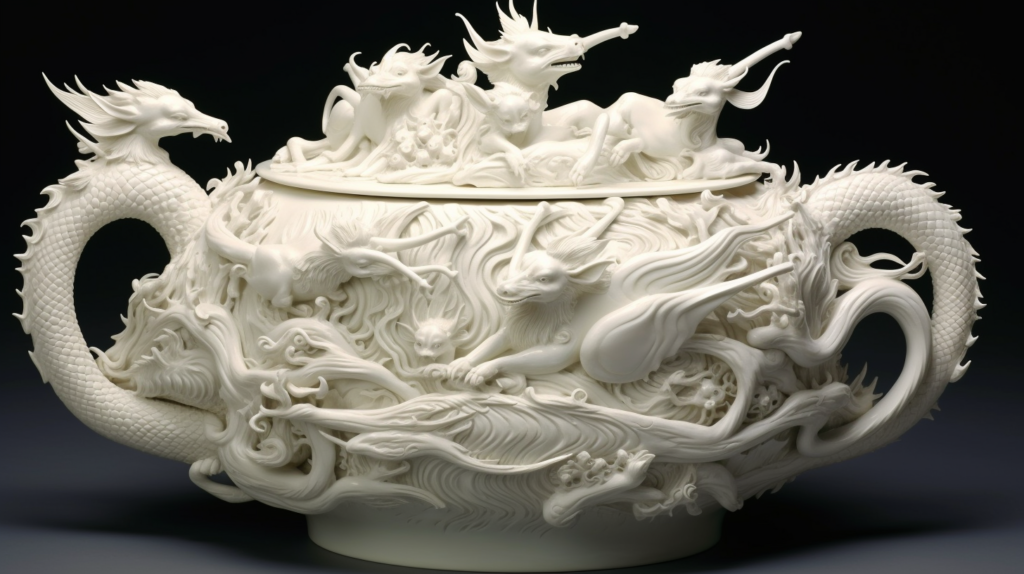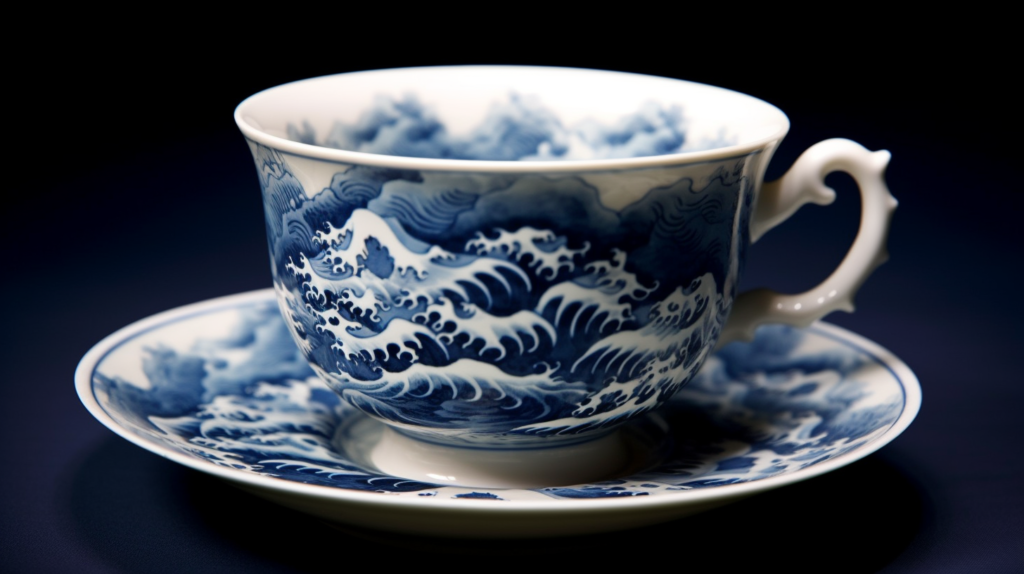Jingdezhen Porcelain.
Renowned as the “Porcelain Capital” of China, has a rich history of producing exquisite porcelain. The production process of Jingdezhen porcelain involves several intricate steps that require meticulous craftsmanship and attention to detail.
It all begins with selecting high-quality raw materials, including kaolin clay, pottery stone, and porcelain stone. These materials are carefully mixed and purified to create a smooth and homogeneous clay body. The clay is then shaped into various forms using techniques like wheel-throwing, hand-building, or mold casting.
Once the desired shape is achieved, the pieces go through the drying process, where they are left to air dry or placed in kilns to remove any remaining moisture. After drying, the porcelain is ready for the first firing, known as the biscuit firing. This firing helps strengthen the porcelain and prepares it for glazing.
The glazing process is a critical stage in Jingdezhen porcelain production. Skilled artisans meticulously apply layers of glaze to the pieces, using brushes or dipping techniques. The glaze not only enhances the appearance but also adds a protective layer and creates a smooth and glossy finish. Intricate patterns or designs may be hand-painted or applied using transfer techniques.
After glazing, the porcelain undergoes a final firing in high-temperature kilns, reaching temperatures of around 1,300 to 1,400 degrees Celsius. This firing vitrifies the clay and fuses the glaze, resulting in a durable and translucent porcelain body with vibrant colors.
The final step involves careful inspection and quality control. Skilled craftsmen examine each piece for any imperfections, such as cracks, bubbles, or uneven glazing. Only the flawless pieces pass the rigorous standards and bear the mark of authenticity.
The entire production process of Jingdezhen porcelain combines traditional techniques with modern innovations, preserving the legacy of this esteemed art form. Each piece embodies the rich cultural heritage and exquisite craftsmanship that has made Jingdezhen porcelain highly sought after by collectors and connoisseurs worldwide.
Wood-Fired Teaware.
Wood-fired teaware, also known as “Anagama” teaware, holds a special place in the world of Chinese ceramics. This unique production process involves firing ceramic pieces in a wood-burning kiln, resulting in distinct and captivating effects on the final teaware.
The production of wood-fired teaware begins with the preparation of clay. Artisans select clay that is suitable for the desired forms and properties of the teaware. The clay is then shaped into various vessels, such as teapots, cups, and bowls, using traditional hand-building or wheel-throwing techniques.
Once the pieces are shaped, they are left to dry gradually to ensure even moisture content and prevent cracking during firing. The dried teaware is then carefully stacked in the wood-fired kiln, which is designed to create unique atmospheric conditions for the firing process.
The firing of wood-fired teaware is a complex and labor-intensive task. The kiln is loaded with wood, usually a combination of hardwoods like pine or oak, which serves as both the fuel source and the agent for creating distinctive effects on the teaware. As the wood burns, it releases ash and volatile compounds that interact with the ceramic surface, leaving behind marks, glaze variations, and captivating patterns.
The firing process is carefully monitored by experienced potters who control the temperature and air circulation within the kiln. The firing can take several days or even weeks, depending on the desired effects and the size of the kiln. The intense heat of the wood fire, reaching temperatures of around 1,200 to 1,400 degrees Celsius, transforms the clay into durable ceramic and creates unique color variations, ash deposits, and glaze effects on the teaware.
Once the firing is complete, the kiln is cooled, and the teaware is carefully unloaded. Artisans inspect each piece, looking for distinctive wood-fired effects, such as “kiln marks,” subtle crackling, or ash deposits that enhance the character and beauty of the teaware. The pieces are then cleaned and polished, revealing the true essence of their wood-fired journey.
Wood-fired teaware embodies the harmony between human skill and natural elements. Each piece carries the marks of the fire, the wood, and the kiln, creating a connection between the teaware and its environment. The unpredictable nature of the wood firing process adds a touch of serendipity, making each piece truly one-of-a-kind and cherished by tea enthusiasts who appreciate the rustic, organic, and soulful qualities of wood-fired ceramics.
Yixing Clay Teapots.
Also known as Zisha teapots, are renowned for their exceptional craftsmanship and unique properties. Made from the distinctive Yixing clay found in the region of Yixing in Jiangsu Province, China, these teapots have a rich history dating back centuries.
The production process of Yixing clay teapots begins with the careful selection of the clay. Yixing clay is composed of various mineral deposits and comes in different colors, such as purple, red, and yellow. Artisans choose the appropriate clay based on its quality, texture, and intended use.
After the clay is selected, it undergoes a meticulous preparation process. It is cleaned, purified, and mixed with water to create a workable consistency. The clay is then shaped into the desired teapot form using traditional hand-building techniques or by using molds. Skilled artisans use their expertise to create teapots with elegant and functional designs, taking into consideration factors like balance, ergonomics, and pourability.
Once the teapot shape is formed, it undergoes a drying process to remove moisture gradually. This slow drying process helps prevent cracks and deformations. After drying, the teapot is refined by smoothing and refining the surface, ensuring a flawless finish.
The teapot is then ready for the first firing, known as the biscuit firing. This firing is done at a relatively low temperature, typically around 800 to 900 degrees Celsius, to harden the clay and prepare it for the subsequent steps. After the biscuit firing, the teapots are inspected for any imperfections and refined further if needed.
Next comes the crucial step of applying the mineral-rich Yixing clay “slip” to the surface of the teapot. This slip, made by grinding and mixing the Yixing clay with water, helps enhance the natural color, texture, and aroma-absorbing properties of the teapot. Artisans skillfully apply the slip to the teapot using various techniques, such as brushing or dipping, ensuring even coverage.
Once the teapot is coated with the clay slip, it undergoes the final firing, known as the high-temperature firing. This firing is done at temperatures ranging from 1,100 to 1,200 degrees Celsius, depending on the specific type of Yixing clay used. The high-temperature firing vitrifies the clay, giving the teapot its characteristic durability, heat retention, and breathability.
After the final firing, the teapot is carefully inspected for quality and craftsmanship. Artisans pay close attention to details such as the fit of the lid, the smoothness of the spout, and the overall balance of the teapot. Any imperfections are meticulously addressed to ensure the highest level of craftsmanship.
Yixing clay teapots are highly valued for their ability to enhance the flavor and aroma of tea over time. The porous nature of the clay absorbs the flavors and oils from the tea, developing a patina that adds depth and complexity to subsequent brews. With continued use, the teapot becomes seasoned, creating a unique tea experience.
The production process of Yixing clay teapots requires the skill and dedication of experienced artisans who have honed their craft over generations. Their mastery of clay selection, shaping, firing, and finishing techniques contributes to the exceptional quality and enduring beauty of Yixing clay teapots, making them treasured pieces for tea enthusiasts worldwide.
Ru Kiln Ceramics.
Also known as Ru ware, is a type of Chinese porcelain that is highly regarded for its exquisite craftsmanship and unique glazes. The Ru kiln was one of the five famous kilns of the Song Dynasty (960-1279) and is renowned for producing some of the most revered ceramics in Chinese history.
The production process of Ru kiln ceramics involved several intricate steps, starting with the selection of high-quality clay. The clay used in Ru ware was typically sourced from local deposits near the Ru kiln site in Baofeng County, Henan Province. The clay was chosen for its fine texture, purity, and ability to withstand high firing temperatures.
Once the clay was obtained, it underwent a meticulous preparation process. The clay was carefully refined, removing impurities and excess moisture, to create a workable material suitable for shaping. The refined clay was then shaped into various forms using hand-building techniques or by using molds and potter’s wheels.
After the initial shaping, the ceramics went through a process called bisque firing. This firing, done at a relatively low temperature, helped harden the clay and prepare it for the subsequent glazing process. The bisque-fired ceramics were inspected for any imperfections, and corrections were made if necessary.
The distinctiveness of Ru kiln ceramics lies in its glazes. The most famous glaze used in Ru ware is the “sky blue” glaze, characterized by its delicate and ethereal appearance. The glazing process required precision and expertise. The glazes were carefully prepared by grinding specific minerals into fine powders and then applied to the ceramics’ surface using various methods, such as brushing or dipping.
After the glazing process, the ceramics underwent the final high-temperature firing. The firing took place in large kilns at temperatures exceeding 1,200 degrees Celsius. This high firing temperature was crucial for the development of the unique characteristics of Ru ware, including its distinctive glaze texture and color.
The firing process was a delicate balance of temperature and atmosphere control. Achieving the desired glaze effects required careful monitoring of factors such as the kiln temperature, duration of firing, and the introduction of specific gases into the kiln. The skilled potters had to rely on their experience and expertise to create the desired results.
The outcome of the firing process was highly unpredictable, as the glazes could vary in color and texture, ranging from pale blue to subtle crackle patterns. The natural variations and “flaws” in the glaze were considered part of the charm and uniqueness of Ru kiln ceramics.
Due to the complexity of the production process and the limited quantity of Ru ware produced, genuine pieces of Ru kiln ceramics are extremely rare and highly sought after by collectors and connoisseurs worldwide. The delicate beauty, refined craftsmanship, and rich historical significance of Ru kiln ceramics make them treasured works of art that showcase the mastery of Chinese ceramic production during the Song Dynasty.
Dehua Porcelain.
A type of Chinese porcelain that originates from the Dehua kilns in Fujian province, China. Renowned for its pure white color and elegant simplicity, Dehua Porcelain has a long and rich history that spans several centuries.
The production process of Dehua Porcelain begins with the selection of high-quality porcelain clay, known as Dehua clay. This clay is prized for its fine texture, high plasticity, and low iron content, which contributes to the porcelain’s characteristic milky-white appearance. The clay is carefully prepared and refined to remove impurities and achieve the desired consistency.
Once the clay is prepared, the shaping process begins. Skilled artisans employ various techniques such as hand-building, wheel throwing, and mold casting to create the desired forms of the porcelain pieces. Traditional Dehua Porcelain often features delicate and intricate designs, showcasing the artistry and craftsmanship of the artisans.
After shaping, the porcelain pieces undergo the first firing, known as the bisque firing. This firing, done at a relatively low temperature, strengthens the clay and prepares it for glazing. The bisque-fired pieces are inspected for any imperfections, and adjustments may be made before proceeding to the glazing stage.
The glazing process is a critical step in creating the signature appearance of Dehua Porcelain. The porcelain is coated with a special glaze made from a combination of feldspar and quartz. This glaze gives Dehua Porcelain its distinctively smooth and translucent surface. The glaze can vary in thickness, and skilled craftsmen apply it using techniques like brushing, dipping, or spraying to achieve the desired effect.
After glazing, the porcelain pieces undergo the final high-temperature firing, which takes place in kilns reaching temperatures of around 1,300 to 1,400 degrees Celsius. The high firing temperature ensures the vitrification of the porcelain, resulting in its durability and unique lustrous appearance.
During the firing process, the kiln atmosphere is carefully controlled to avoid any unwanted discoloration or defects. The use of wood or coal as fuel in traditional kilns can introduce subtle variations in the firing atmosphere, which contribute to the individual character of each piece of Dehua Porcelain.
The finished Dehua Porcelain exhibits a range of characteristics, including its pure white color, translucent quality, and smooth surface. The porcelain often features minimalist designs, emphasizing simplicity and elegance. It is known for its versatility, being used for various types of tableware, vases, figurines, and other decorative items.
Dehua Porcelain has a long history of appreciation both in China and internationally. Its serene beauty, fine craftsmanship, and cultural significance have made it highly sought after by collectors and enthusiasts. The legacy of Dehua Porcelain continues to thrive, with contemporary artisans carrying on the tradition and producing exquisite pieces that embody the timeless allure of this remarkable Chinese porcelain.
Blue and White Porcelain.
One of the most iconic and beloved types of Chinese ceramics, has a rich history dating back centuries. It is characterized by its white body adorned with intricate blue designs, often featuring scenes from nature, mythology, or cultural motifs. The production process of blue and white porcelain involves several stages of meticulous craftsmanship and artistic skill.
The first step in creating blue and white porcelain is the preparation of the clay. A fine-grained and high-quality clay is selected, usually kaolin clay, which provides a smooth and durable foundation for the porcelain. The clay is carefully refined and purified to remove impurities, ensuring a pristine base for the artwork.
Once the clay is prepared, it is shaped into the desired forms. Skilled craftsmen employ various techniques such as wheel throwing, hand-building, or mold casting to create bowls, plates, vases, and other porcelain pieces. The shaping process requires precision and attention to detail to achieve the desired proportions and forms.
After shaping, the porcelain pieces go through the first firing, known as the bisque firing. This firing, conducted at a relatively low temperature, strengthens the clay and prepares it for the subsequent glazing and painting stages. The bisque-fired pieces are inspected for any imperfections and may undergo additional refinement before moving forward.
The glazing process is a crucial stage in blue and white porcelain production. A special glaze, often made from a mixture of silica, kaolin, and other minerals, is applied to the surface of the porcelain. The glaze not only adds a protective layer but also serves as a canvas for the vibrant blue designs. The glazed porcelain is then left to dry before the painting stage.
The painting of blue and white designs is where the true artistry shines. Skilled artisans, known as “blue and white painters,” meticulously apply the cobalt blue pigments onto the glazed surface using fine brushes. The designs can vary from delicate floral patterns to intricate landscapes or intricate storytelling scenes. The painters require a steady hand and a deep understanding of traditional motifs to create the desired aesthetic effect.
Once the painting is complete, the porcelain pieces undergo the final high-temperature firing. This firing, conducted at temperatures exceeding 1,200 degrees Celsius, allows the cobalt blue pigments to fuse with the glaze, resulting in the vibrant blue coloration. The high firing temperature also ensures the durability and strength of the porcelain.
The finished blue and white porcelain pieces showcase a harmonious blend of delicate craftsmanship, artistic expression, and cultural symbolism. The contrast between the brilliant blue designs and the pure white background creates a timeless elegance that has captivated collectors and enthusiasts worldwide.
Blue and white porcelain holds a significant place in Chinese ceramics and cultural heritage. Its enduring popularity and influence have inspired countless imitations and adaptations across different cultures. The production of blue and white porcelain continues to thrive, with both traditional techniques and contemporary innovations preserving this cherished art form and carrying its legacy into the future.






